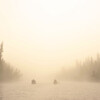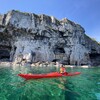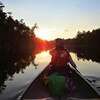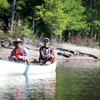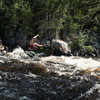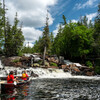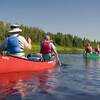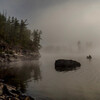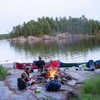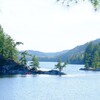
10 Wondrous Lakes in Woodland Caribou Park
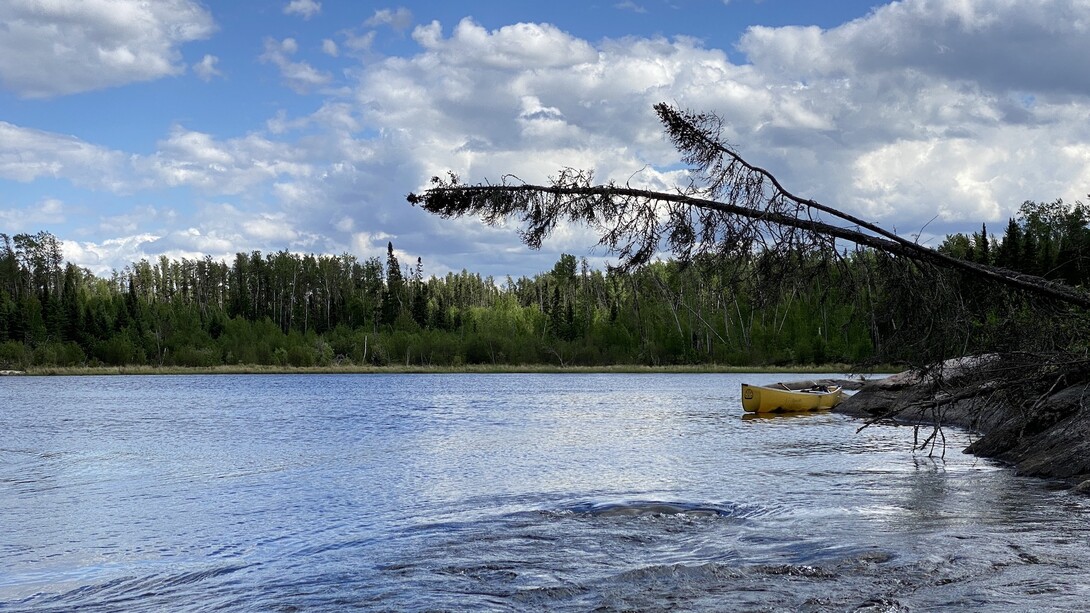
Woodland Caribou Provincial Park offers a wide array of canoe tripping options in northwestern Ontario, adjacent to Manitoba. The park sprawls across 500,000 hectares, making it one of the province’s largest protected areas. Its unique water-rich, prairie-boreal landscape makes it different from anywhere else in Ontario. Expect sunny and dry weather through the summer months, plenty of evidence of wildfires and a boreal forest of jackpine, spruce and birch. As its name suggests, the park is also a sanctuary for woodland caribou, an Ontario endangered species.
Woodland Caribou abuts Manitoba’s Atikaki Wilderness Provincial Park, creating a protected area of over 1 million hectares—and supporting a lifetime’s worth of canoe tripping potential. The entire region has global conservation significance as part of the 2.9-million-hectare Pimachiowin Aki World UNESCO Heritage Site, which recognizes the area’s rich biological and cultural diversity.
Woodland Caribou Provincial Park is best for experienced paddlers, but you don’t need to be a whitewater enthusiast to take a long canoe trip here. The park straddles a headwaters area of countless lakes, perfectly distributed for extended lake-to-lake canoe routes with modest portage lengths. If you are drawn to river tripping, Woodland Caribou lakes funnel into the iconic Bloodvein River, a Canadian Heritage waterway, as well as the more intimate Gammon River. Both of these rivers flow west into Manitoba and Lake Winnipeg.
Such a large and remote wilderness area is no place for those who are inexperienced in the backcountry; just planning a trip here requires canoe tripping experience, and can be a fun pastime during the winter months. If you have any question about your skills or would rather leave the planning to experts, you can always book a trip with a local guide, such as Goldseekers Canoe Outfitting. This veteran local outfitter can also provide route planning and full or partial outfitting to get you ready for a trip of a lifetime.
Such a vast wilderness makes it difficult to narrow down a list of the best lakes in Woodland Caribou Provincial Park. But we took a shot at it, and came up with this short list.
Leano Lake
Leano Lake is located in the southeastern corner of Woodland Caribou Provincial Park, with road access via Long Legged and Mile 51 roads (use a local outfitter for a shuttle to navigate these back roads and store your vehicle while you’re paddling). Leano is the gateway to a fantastic one-week loop that takes in Burnt Rock, Mexican Hat, Glen, Wrist and Aegean lakes.
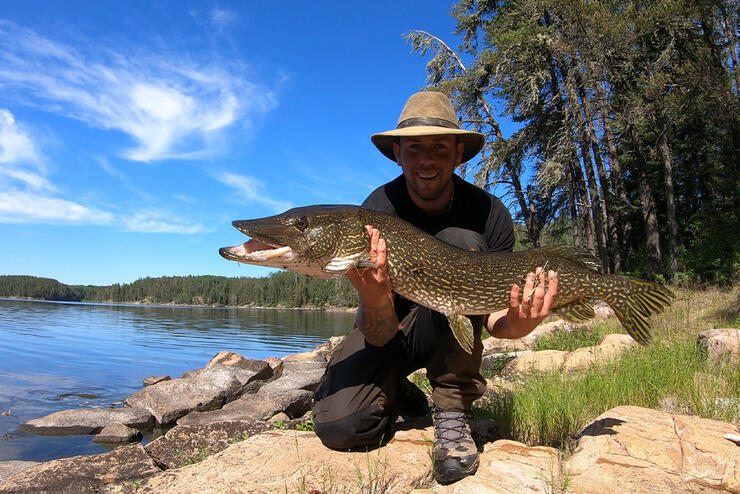
Artery Lake
Located near the western boundary of Woodland Caribou and adjacent to the Manitoba border, Artery Lake is a remote body of water that has a magical feel. Not only do Artery’s many coves and bays beg exploration, its granite cliffs serve as natural canvases for some of the best Indigenous pictographs in Ontario. Artery is a popular fly-in destination for paddlers to start a 10-day canoe trip on the Bloodvein River.
Knox Lake
This large lake on the eastern boundary of Woodland Caribou offers world-class walleye and northern pike fishing. You can get here along a canoe route from the road access point on Lund Lake, and continue west to Murdock Lake and the headwaters of the Bloodvein River. Knox is part of a loop canoe route starting at Lund and heading west and north to Larus and Thicketwood lakes, before circling east to Olive Lake and connecting smaller bodies of water through Linge and Young lakes.
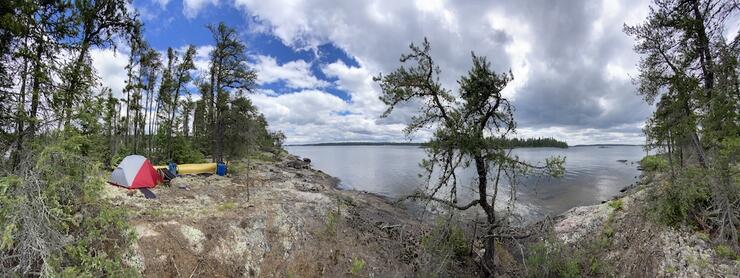
Gammon Lake
Gammon Lake sits in the headwaters of the Gammon River, the main waterway draining the southern half of Woodland Caribou Provincial Park. Gammon Lake boasts a diverse shoreline of rocky headlands and deep, mysterious bays. It’s central to many Woodland Caribou Provincial Park canoe routes. You’ll find plenty of campsites and portage connections to Royd and Hammerhead lakes.
Carroll Lake
Perched on the western boundary of Woodland Caribou, adjacent to Manitoba’s Atikaki Provincial Wilderness Park, Carroll Lake is a large body of water on the Gammon River, which twists and turns through the southern boreal forest in its gradual descent to Lake Winnipeg.
Larus Lake
Larus Lake is the watery crossroads of Woodland Caribou, offering connections to and from all corners of the park and serving as a great access point for a 2-week whitewater canoe trip on the Bloodvein River. Larus embodies the typical Woodland Caribou landscape, with its eastern shore singed by recent wildfires and the west side lushly carpeted in the jackpine, birch and spruce trees of Canada’s boreal forest. Looking for a Woodland Caribou outpost fishing camp? You’ll find two inviting options on Larus Lake.
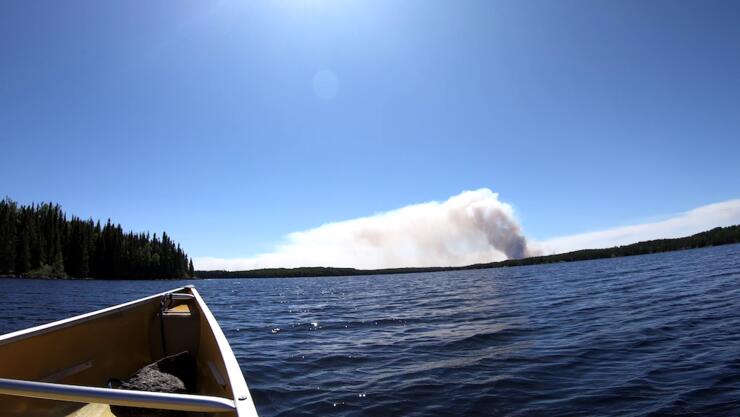
Telescope Lake
Shaped like its namesake, Telescope Lake funnels paddlers from the eastern boundary of the park at the Onnie Lake access point into Woodland Caribou’s central interior. Plan to spend several hours traversing this long and narrow body of water, or longer if you wish to tuck into its many bays or troll or jig for walleye. Telescope offers several campsites on islands and headlands.
Constellation Lake
This smaller lake east of Royd Lake is surprisingly deep, making it one of Woodland Caribou’s best places to catch lake trout. These secretive fish prefer cold water, making them more elusive than other species. Target lake trout with spoons early in the season and tube jigs later in the summer in deeper locations as the water warms up. Constellation Lake is part of a shorter, 5- to 7-day loop canoe trip starting from Lund Lake and passing through Indian House, Gammon and Royd lakes.
Haggart Lake
Like many larger Woodland Caribou lakes, Haggart features a deeply crenelated shoreline with plenty of islands and arms, making it fantastic to explore. Much of the mainland shoreline has been charred by wildfire but you’ll find unburnt campsites on Haggart’s many islands. Haggart Lake is located in the southwestern corner of the park; it’s a long trek across the park to get here, so you’ll likely have the place to yourself. Or, expedite your arrival and maximize your time on the water by chartering a floatplane flight and enjoying a Woodland Caribou fly-in canoe trip.
Olive Lake
Olive Lake is tucked away in the remote northeastern corner of Woodland Caribou, offering plenty of isolation and outstanding fishing for walleye and northern pike. Olive Lake is part of canoe routes on the Sabourin River; get here via the Trough Lake access point or by flying in from Red Lake.

Planning Your Trip
Woodland Caribou is a far-flung canoe-tripping destination with limited access options; but planning a bucket-list Woodland Caribou canoe trip is a fun and rewarding task once you know where to look. You’ll feel the anticipation and excitement growing as your trip details come together. We’ve assembled a comprehensive guide to planning a Woodland Caribou Provincial Park canoe trip in a separate article. Meanwhile, here are some key points to get you started.
Access
Woodland Caribou Provincial Park is accessed via the town of Red Lake, a day’s drive on paved highways north of Thunder Bay, Ontario. With some additional planning you can also work with a local outfitter to access Woodland Caribou by train: the VIA Rail Canadian passenger service crosses Highway 105 about 170 km south of Red Lake; arrange a vehicle pickup from here with a local canoe outfitter.
The park backcountry is remote, with paddle-in options limited to a few road-accessible lakes. If you have the time, you can paddle into the park directly from the town of Red Lake. Otherwise, arrange a vehicle shuttle to access points on forestry roads, including Lund Lake, Johnson Lake, Onnie Lake and Leano Lake—each offering parking areas and canoe launches.
Woodland Caribou Provincial Park fly-in canoe trips are a great way to gain an aerial perspective of the area and maximize your time exploring the backcountry. Book a fly-in canoe trip with Goldseekers Canoe Outfitting or Sunset Canoe Outfitting for the ultimate wilderness experience. Custom floatplane charters for self-guided groups are also available from Superior Airways and Viking Outposts, both of which are based in Red Lake.
Canoe Rentals, Outfitters and Guided Trips
Leave all the planning to someone else and practice your wilderness tripping skills with an experienced guide, or pick and choose the rental equipment and logistical support necessary for your own self-guided adventure. Here’s a list of Woodland Caribou Provincial Park outfitters.
Camping Permits and Regulations
Backcountry camping permits are required to travel in Woodland Caribou Provincial Park. Reservations are not available (and generally unnecessary), but you can purchase your interior camping permits online up to two weeks before your departure date. Permits are also available at the Woodland Caribou Provincial Park office during business hours at 227 Howey Street in Red Lake. There’s a self-serve kiosk located outside the office during non-business hours or purchase your camping permits from an outfitter. The maximum group size is 9 people per campsite in Woodland Caribou Provincial Park and you must camp at official park campsites.
Woodland Caribou Provincial Park is a wilderness area and campsites and portage trails are marked discreetly. Portages and backcountry campsites are maintained, however trail work is often disrupted by wildfires. Bring a gas stove for cooking, be modest with campfires (when allowed) and follow the principles of Leave No Trace. It is illegal to remove natural objects from Woodland Caribou Provincial Park, including driftwood, stones, feathers and antlers. Cultural sites and artifacts in the park are also strictly protected; report your observations to park staff to add to the regional inventory of important cultural locations.
Woodland Caribou Lodges
Several companies operate deluxe lodges and do-it-yourself outpost camps on lakes in Woodland Caribou Provincial Park, including most of those mentioned in this article. Most fly-in camps in Woodland Caribou cater primarily to anglers; inquire with regards to options for paddling. In particular, Viking Island Lodge offers options for lodge-based canoeing from its facilities on Douglas Lake.
Discover a wilderness wonderland at Woodland Caribou Provincial Park
From vast, crystal-clear lakes to wild rivers, Woodland Caribou Provincial Park has it all. This is the perfect destination for experienced canoeists looking to take their tripping to the next level on a bucket-list trip.
- Goldseekers Canoe Outfitting and Wilderness Expeditions is located on the doorstep of Woodland Caribou Provincial Park in Red Lake, Ontario. The company offers full- and partial outfitting, including canoe and equipment rentals, route planning advice, shuttles, and guided trips. Goldseekers also maintains the Paddle Inn B&B.
- Sunset Canoe Outfitting is based in Ear Falls, Ontario, on Highway 105. They offer canoe rentals, route planning, vehicle shuttles, and can assist with organizing a Woodland Caribou Provincial Park fly-in canoe trip.
- MHO Adventures offers all-inclusive trips on wild rivers across Ontario, including a 13-day Bloodvein River canoe trip starting with a fly-in to Artery Lake, on the western edge of Woodland Caribou Provincial Park.
- Black Feather also organizes a 2-week, all-inclusive guided whitewater canoe trip on the Bloodvein River starting with a flight from Red Lake and finishing at Lake Winnipeg.
Recommended Articles
Want to Live Longer?
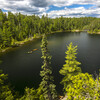
10 Best All-Inclusive Canoe Trips
TOP Paddling Events
Weekend Trips

FIND SOLACE
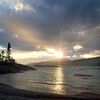
Explore incredible Lake superior
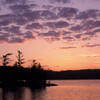
Backcountry Beginners
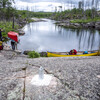
Guide to the Omimi & Quetico Trails
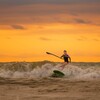
Surf SUP!
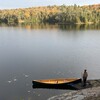
Next-Step Canoe Trip Destinations
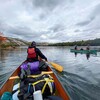
Fall Paddling in Ontario
Sea Kayak Lake Superior
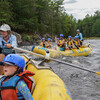
Go With the Flow
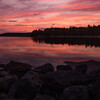
Must-Visit Lakes in Quetico
Discover Paddling Escapes In Timmins
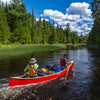
Paddling Vacations From Ottawa
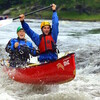
Learn or Improve Your Paddling Skills
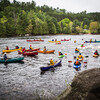
Get On The Water

So Many Places to Paddle


